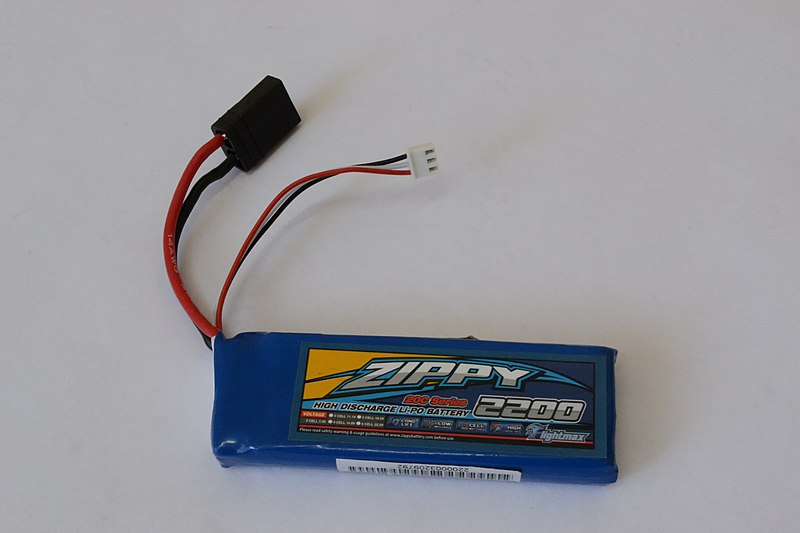How to Safely Dispose of LiPo Batteries
-
- Last updated:


Do you like to race RC cars or tinker with models and other hobby kits? Then sooner or later, you are going to start using Lithium Polymer (LiPo) batteries.
These batteries are a great way to make your work come to life. However, no battery lasts forever. And most handymen don’t know the proper way to dispose of LiPo batteries.
That is where we come in. Our definitive guide will help you dispose of LiPo batteries cleanly and safely. And with that out of the way, you can get back to enjoying your favorite hobbies!

What Makes Disposal Difficult?

If you’re relatively new to LiPo batteries, you probably have a pretty simple question right now: just what makes these batteries so difficult to dispose of?
The simplest answer is that LiPo batteries hold onto their charges for a long time, even if the battery hasn’t been working properly. And if you simply throw a LiPo battery with a charge into the garbage, you are creating a potential danger for yourself or somebody else.
That leads us to the primary challenge of disposing of LiPo batteries. Before you can get rid of them, you must find a way to get the charge down to “zero.”
Getting the Battery to Zero Volts
Strictly speaking, there are many different ways to bring the LiPo charge down to zero volts. The safest method is using a discharger, and this is the method we will focus on. However, there are other methods that you may prefer, and we’ll quickly review them.
The most basic way to reduce the voltage is to destroy the LiPo battery yourself. The trick is destroying it in such a way that it does not pose a risk to you or anyone else. For this reason, some handymen will actually shoot the battery from a safe distance at their local firing range!
A less explosive solution is to submerge the battery in saltwater. Unfortunately, this method can take a very long time, and it does not always fully reduce the voltage. In short, you might spend a lot of time and effort and have very little to show for it.
This leads us back to the discharger. While there are a few more steps to obtaining and using a discharger, it is ultimately the safest and most reliable way to reduce the LiPo voltage to zero.

Dischargers: To Buy or To Build

There are at least a couple of different ways to get the discharger that you need. Many handymen prefer to build their dischargers out of old lightbulbs. However, you can also buy good dischargers online as well.
Unless you’re feeling particularly like MacGyver, we recommend simply buying a good discharger. If LiPo batteries are a regular part of your hobbies, you might as well have some reliable dischargers kicking around the house whenever you need to dispose of a dying battery!
The Discharge Process
Once you have a discharger, the actual discharge process is pretty simple. You simply check the voltage of the battery in question and connect it to a discharger that can handle that amount.
At this point, it’s a waiting game. Activate the discharger and wait for it to do its thing. For maximum safety, you may want to put the discharger and the unwanted battery in a LiPo sack or other covering just in case something goes wrong.
You can use a voltmeter to monitor progress and eventually verify that the battery is discharged. It is okay if there is a voltage “rebound” and it doesn’t get down to zero volts as long as it is safely below 3V per cell.
Your final step is to permanently connect the positive and negative leads to one another. This makes sure there is no way for the battery to retain voltage after you dispose of it.
Safety Concerns and Problems

The best safety advice we can offer when disposing of LiPo batteries is this: things can easily go wrong, and you need to be prepared.
For example, some batteries may generate excess heat while you work, and others may swell. In some rare cases, the battery might even catch on fire! This is why we recommend closely monitoring the discharge process instead of walking away.
Using safety measures such as LiPo sacks can make the whole process safer. But there is simply no substitute for keeping an active eye on what is going on!

Final Thoughts
Don’t let the complex LiPo disposal process discourage you. For RC and other hobby enthusiasts, these batteries are a “must-have.” And by mastering safely disposing of the batteries, you can make sure that these batteries will be a regular part of your hobby for many years to come!
Featured Image Credit: Charger Battery, KundaliniZero, Wikimedia Commons CC SA 3.0 Unported
Contents

